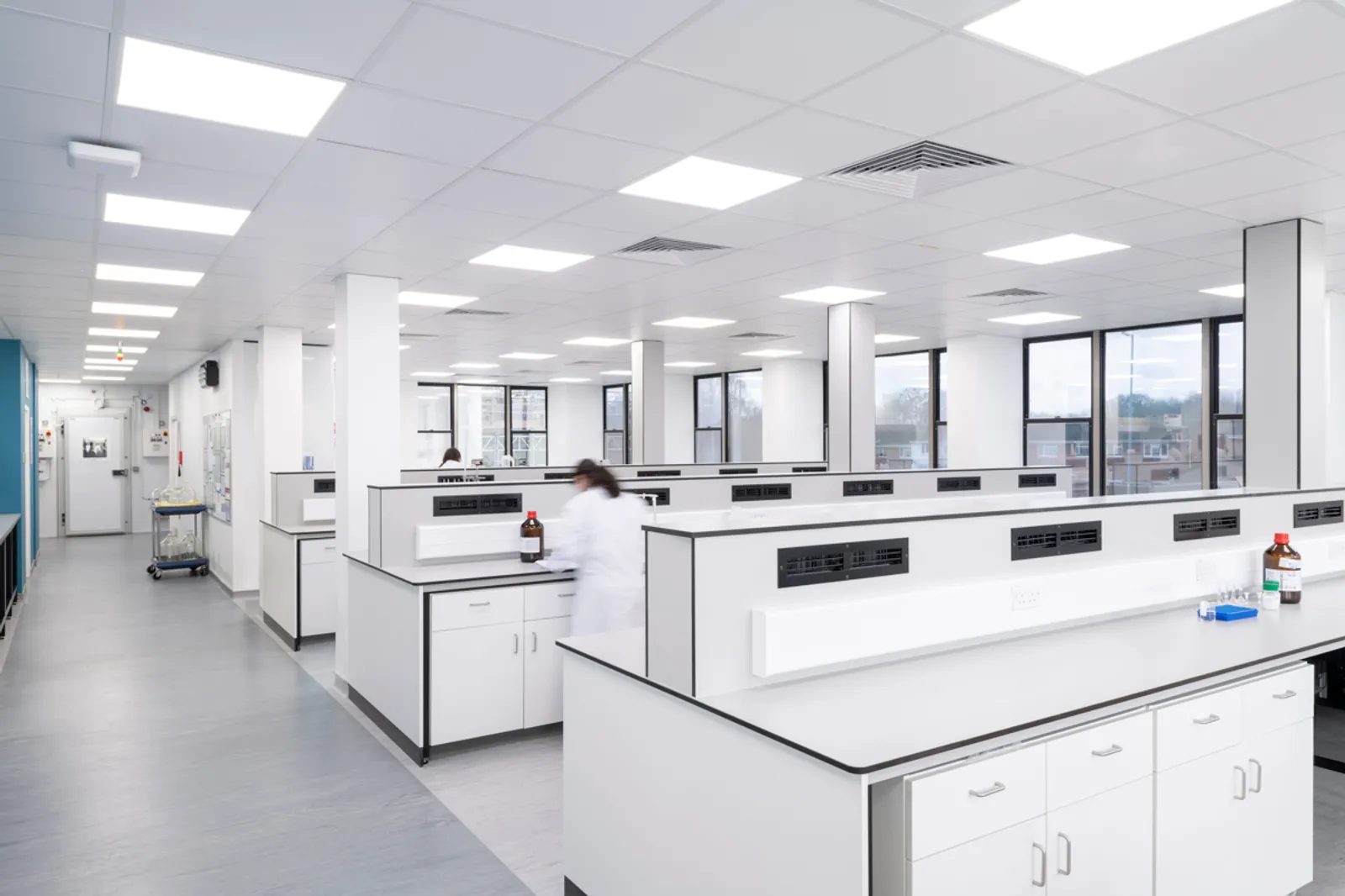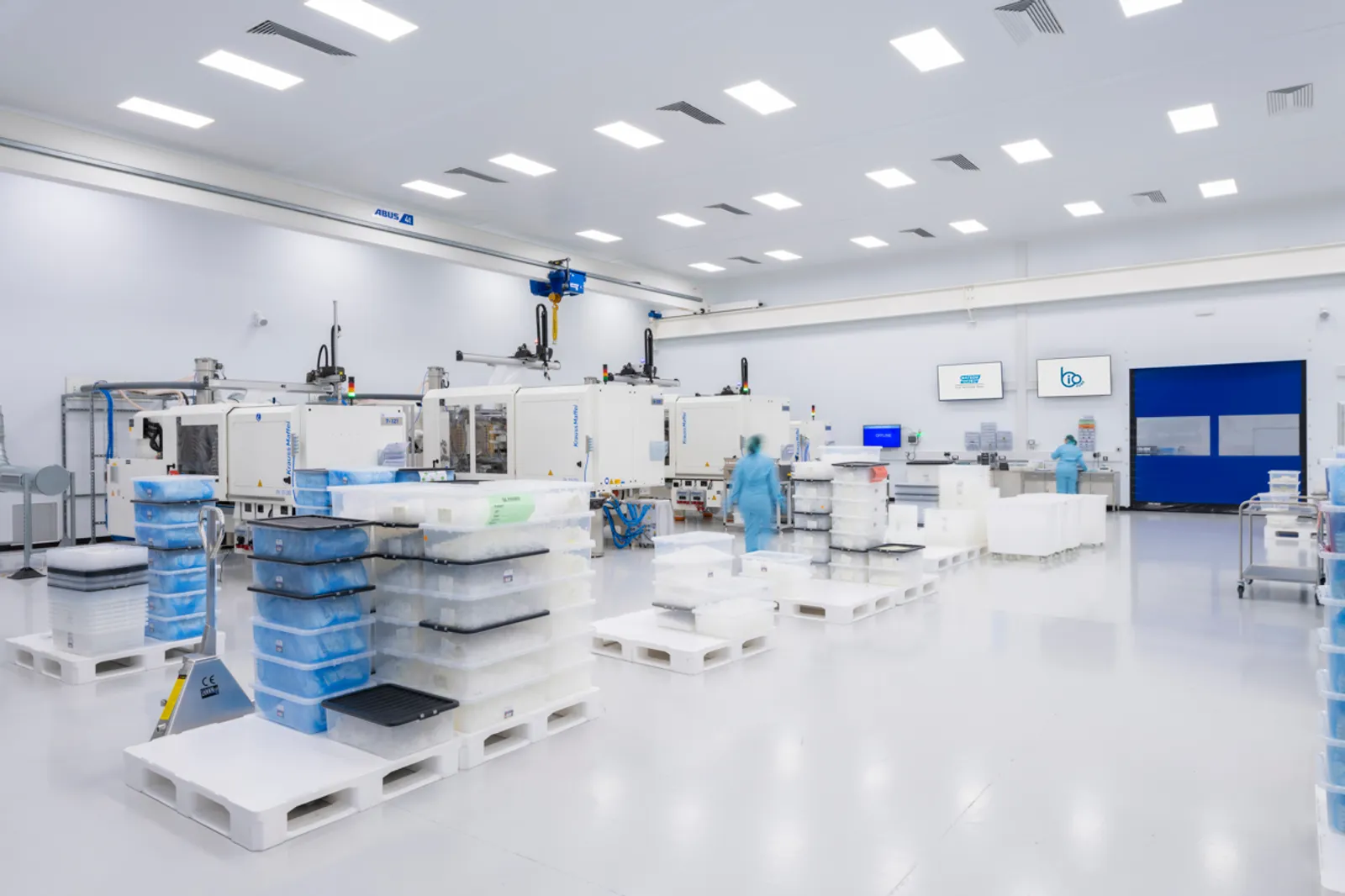
What’s inside our guide to laboratory and controlled environments?
What’s inside our guide to laboratory and controlled environments?
When it comes to laboratory and controlled environments, the last couple of years has propelled life sciences into the future. With flexible working fuelling agile research and innovation, this exciting sector is one that many organisations are now looking to transition into.
But from finding a building that’s fit for purpose to the latest “smart lab” technology, there’s so much to consider. That’s why there’s no better time to download our latest guide ‘Designing laboratory and controlled environments fit for tomorrow’.
Can’t wait? No problem. Here’s a sneak peek at what’s inside…
What to consider when finding a building for laboratory space
As you might expect with a space that's so technical, there’s a lot to think about. So here’s a breakdown of just some of the things we'll cover in the guide:
- Pulling together a user requirements schedule and business plan
- Selecting a building that’s fit for this purpose
- Considering all mechanical and electrical services (M&E)
- Looking at any lease obligations
- Weighing up business growth and extension possibilities
- How to seek the earliest advice
- Assessing the environmental impact
- Sustainability and cutting your carbon footprint
- Future-proofing your lab for tomorrow
The good thing is that for all the things you need to consider when planning your scientific space, there are just as many opportunities.

Top 10 opportunities for your lab design
As countless offices sit empty due to remote working, many innovative organisations saw this as the perfect opportunity to transform these spaces into something scientific. Find out about the 10 key opportunities in lab design (and how to achieve them) in our guide. We cover:
- How to rule with regulations and regionality
- Joining an ever-growing movement of innovators
- How to hit the ground running and go live ASAP
- Becoming accredited by the best in class
- Learning how to make the most of your space
- Balancing client-facing facilities and back-office spaces
- Reusing and relocating equipment and machinery
- Getting clinical when it comes to ‘change control’
- Setting the standard in sustainability
- Making cost savings (without cutting quality)
What type of lab space do you need?
There’s no ‘one-size-fits-all’ for laboratory environments. But our guide does give you an idea of the sort of space you might need. Do your requirements meet a low, medium or high lab specification? Take a look at our handy checklist of criteria to find out.
But this is your lab today, how about tomorrow?
The future for laboratory and controlled environments
Life science is big business - and it’s set to grow. Check out our guide for expert predictions around the latest trends in this space. We talk about:
- The impact of the prestigious Golden Triangle on life sciences
- Flexible labs and their impact on research and development (R&D)
- The future of research with cloud-based collaboration
- Automating processes with ‘smart lab’ technology
- Accessing grants, tax relief and other types of funding

Helping you find the right formula for your scientific space
Take a look at some of our case studies and feel inspired by some of the most exciting and cutting-edge controlled environments in the UK and the Netherlands. And from the ins and outs of refits and relocations to making sustainable adjustments in your lab, there's so much to uncover inside.
Ready to learn more?
We go into much more detail about laboratories and controlled environments in our latest guide: ‘Designing laboratory and controlled environments fit for tomorrow’.